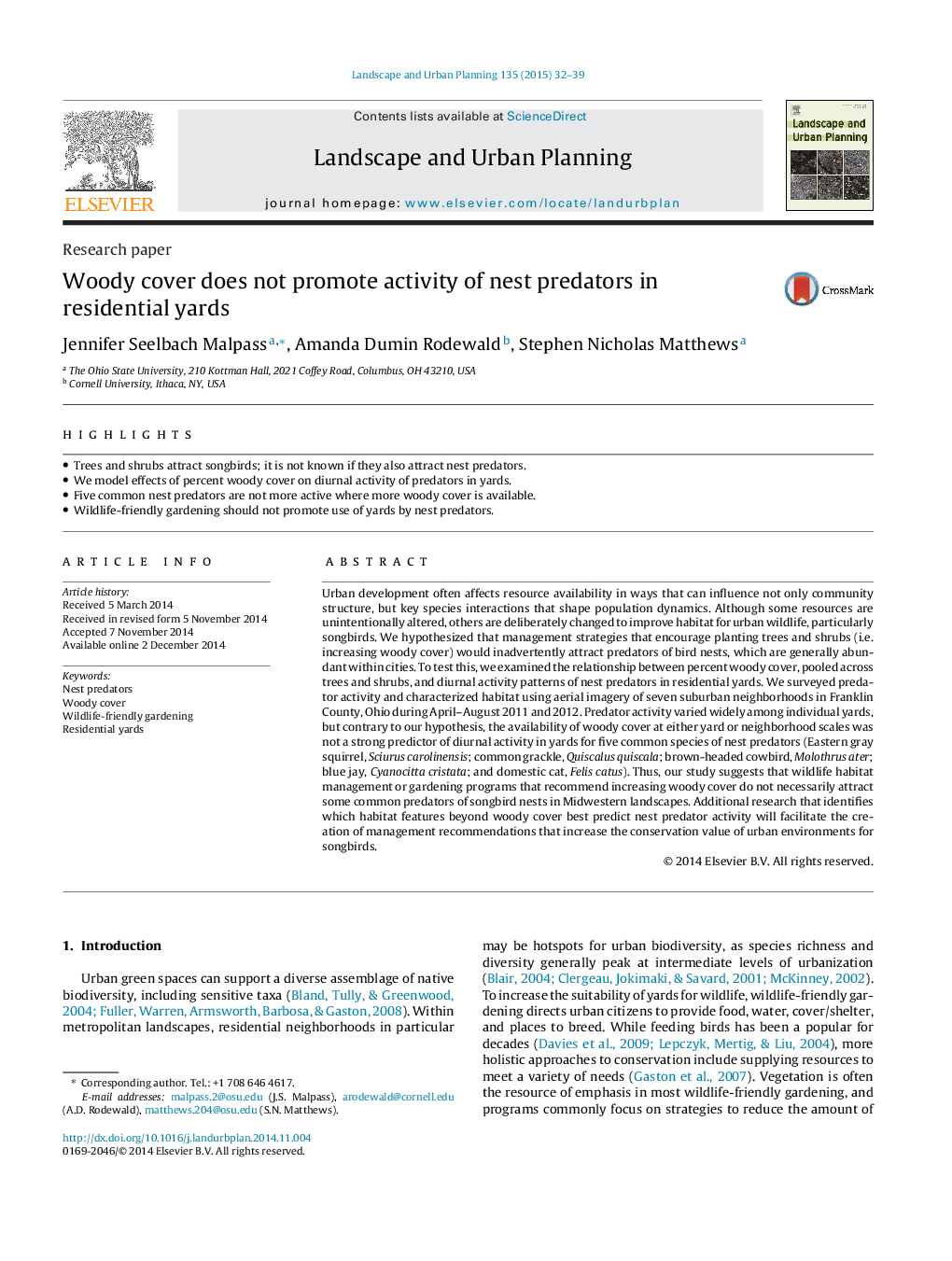| کد مقاله | کد نشریه | سال انتشار | مقاله انگلیسی | نسخه تمام متن |
|---|---|---|---|---|
| 1049192 | 1484623 | 2015 | 8 صفحه PDF | دانلود رایگان |
• Trees and shrubs attract songbirds; it is not known if they also attract nest predators.
• We model effects of percent woody cover on diurnal activity of predators in yards.
• Five common nest predators are not more active where more woody cover is available.
• Wildlife-friendly gardening should not promote use of yards by nest predators.
Urban development often affects resource availability in ways that can influence not only community structure, but key species interactions that shape population dynamics. Although some resources are unintentionally altered, others are deliberately changed to improve habitat for urban wildlife, particularly songbirds. We hypothesized that management strategies that encourage planting trees and shrubs (i.e. increasing woody cover) would inadvertently attract predators of bird nests, which are generally abundant within cities. To test this, we examined the relationship between percent woody cover, pooled across trees and shrubs, and diurnal activity patterns of nest predators in residential yards. We surveyed predator activity and characterized habitat using aerial imagery of seven suburban neighborhoods in Franklin County, Ohio during April–August 2011 and 2012. Predator activity varied widely among individual yards, but contrary to our hypothesis, the availability of woody cover at either yard or neighborhood scales was not a strong predictor of diurnal activity in yards for five common species of nest predators (Eastern gray squirrel, Sciurus carolinensis; common grackle, Quiscalus quiscala; brown-headed cowbird, Molothrus ater; blue jay, Cyanocitta cristata; and domestic cat, Felis catus). Thus, our study suggests that wildlife habitat management or gardening programs that recommend increasing woody cover do not necessarily attract some common predators of songbird nests in Midwestern landscapes. Additional research that identifies which habitat features beyond woody cover best predict nest predator activity will facilitate the creation of management recommendations that increase the conservation value of urban environments for songbirds.
Journal: Landscape and Urban Planning - Volume 135, March 2015, Pages 32–39
